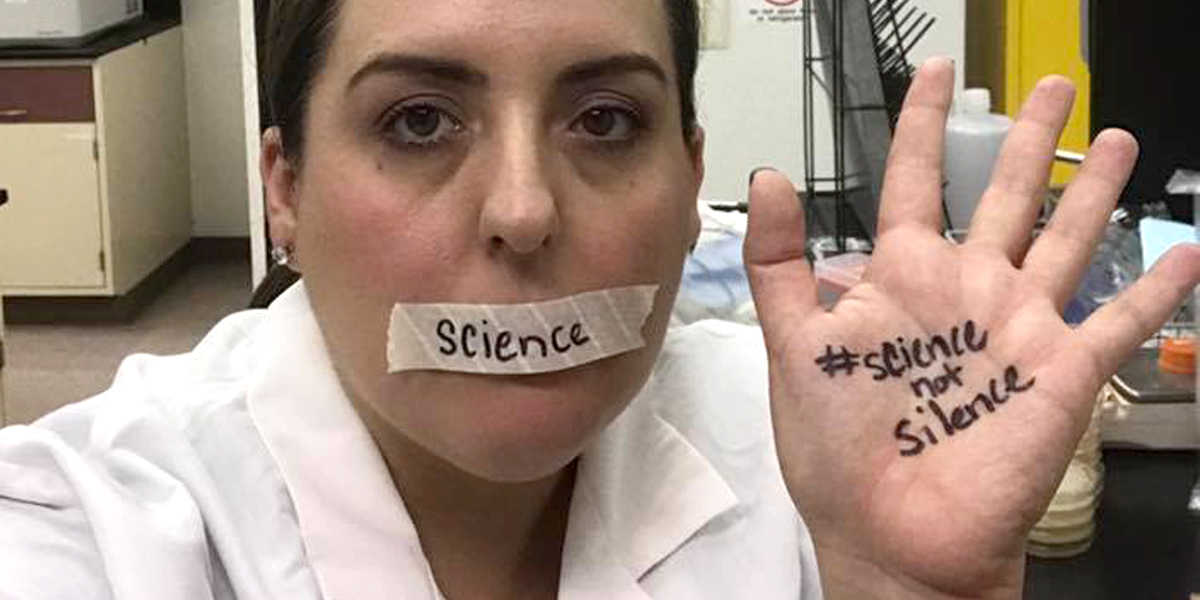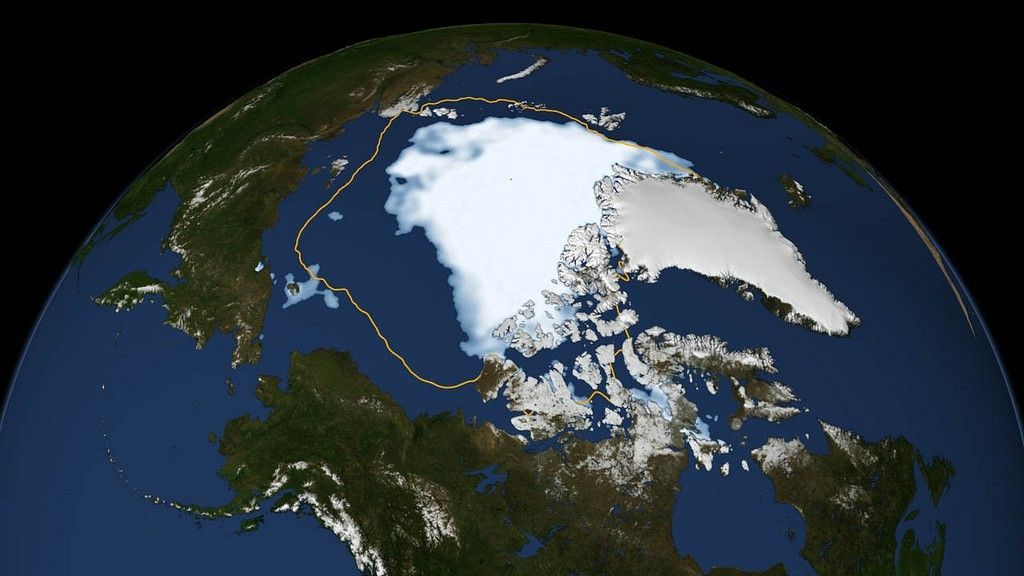
Government Scientists at Climate Conference Terrified to Speak With the Press

By Sharon Lerner
While Donald Trump was reviving both the Dakota Access and Keystone XL pipelines, muzzling federal employees, freezing EPA contracts and first telling the U.S. Environmental Protection Agency (EPA) to remove mentions of climate change from its website—and then reversing course—many of the scientists who work on climate change in federal agencies were meeting just a few miles from the White House to present and discuss their work.
The mood was understandably gloomy at the National Conference and Global Forum on Science, Policy, and the Environment. “I don’t know what’s going to happen. No one knows what’s going to happen,” one EPA staffer who works on climate issues told me on Tuesday, as she ate her lunch. She had spent much of her time in recent weeks trying to preserve and document the methane-related projects she’s been working on for years. But the prevailing sense was that, Trump’s claims about being an environmentalist notwithstanding, the president is moving forward with his plan to eviscerate environmental protections, particularly those related to climate change and the EPA itself.
#Trump's War on #Science Sparks Massive Resistance https://t.co/1Zgu6zhYGY @ScienceMarchDC @MichaelEMann @BillNye @billmckibben @SierraClub
— EcoWatch (@EcoWatch) January 26, 2017
“It’s strange,” the woman said. “People keep walking up to me and giving me hugs.” Like several others I spoke to for this story, she declined to tell me her name out of fear that she might suffer retaliation, including being fired. She was not being paranoid. Already, agency higher ups had warned the EPA staff against talking to the press or even updating blogs or issuing news releases. “Only send out critical messages, as messages can be shared broadly and end up in the press,” said one EPA missive that was shared broadly and ended up in the press. And while the staffer was at the meeting, the EPA’s new brass issued another memo to staff requiring all regional offices to submit a list of external meetings and presentations, noting which might be controversial and why.
The directives have left scientists fearing reprisal for merely mentioning the global crisis that has been at the center of their professional lives for years. It’s the topic “whose name cannot be uttered,” as one Forest Service employee put it to me. A nearby U.S. Department of Agriculture employee offered a series of euphemisms—”extreme weather events, very unusual patterns,” he riffed—before turning serious. “I’m actually scared to talk to you,” he said, turning his hanging name tag inward and backing away from me. The look in his eyes and the tight smiles I received from several federal employees after introducing myself as a reporter reminded me of interviewing scientists in China. My presence inspired fear.
Afraid or not, many federal researchers continued doing their jobs despite the impending doom, presenting research on everything from disease-causing mosquitos to heat waves, decreasing water availability and toxic algal blooms—all issues that have become dramatically more important as the Earth has warmed.
With the dark political backdrop, the hub of productive energy at the conference, which was co-sponsored by the EPA, the National Aeronautics and Space Administration (NASA), the U.S. Department of Agriculture and the Forest Service, brought to mind a cartoon character whose feet continue to frantically pedal in the air even after he’s gone off the cliff.
Among the meeting’s attendees, who included researchers from academia, the private sector and government, there was no discussion of whether climate change is real, no tangled Kremlin-speak suggesting that “the ability to measure and pursue the degree and the extent of that impact and what to do about it are subject to continuing debate and dialogue,” as Scott Pruitt, Trump’s nominee to head the EPA, put it in his confirmation hearing last week.
Instead the scientists were focused on the measurable and indisputable changes they’ve observed—how habitat changes have resulted in epidemics of plague in prairie dogs that can spread the disease to humans, for instance or the way that algal blooms on lakes have impacted the fishing industry. Indeed, the breadth of the climate science at the conference spoke to the absurdity that even someone as powerful as the president of the U.S. could undo it. The Senate held its first hearing on climate change more than 30 years ago and in the intervening years, as understanding of our warming planet has grown, the government has not only collected precise measurements of vanishing arctic ice, rising sea levels, increasing global temperatures, river flooding, drought and heavy rain, it has used that data to understand the short- and long-term consequences of the phenomenon.
As a report I picked up at one of the tables, The Impacts of Climate Change on Human Health in the United States, makes clear, these many objective phenomena have health consequences “now and in the future.” Among those listed were heat-related illness and death, drowning and injuries from flooding, lung and respiratory diseases due to worsening air quality, intestinal illnesses and blood stream infections from water-related infections, water-borne infections and Lyme disease.
That report was a collaboration of 11 federal agencies, including the Departments of Energy, Transportation, Commerce, Defense, Health and Human Services, Energy, State and the Interior, many of which have been working on ways to avert and address further disastrous impacts. Scientists have come up with specific plans for disposing of our waste in a hotter world, for instance and have identified people most vulnerable to climate change (such as kids and the elderly). They have calculated and prepared for increased amounts of storm water and developed an integrated heat health information system that includes air quality forecasts and resources for heat waves.

For those who spend their professional lives focusing on this complex web of interconnected phenomena causing and resulting from climate change, denial and the censoring of the term puts them at war with observable reality. Whether they can utter the word “climate” or not, the fire season will still be 78 days longer than it was in the 1970s, as a Forest Service employee pointed out to me. (A 2015 report from the agency confirmed his point). And last year will still have been the hottest year on record, following the one before that and the one before that—knowledge we have thanks to research from NASA and the federal National Atmospheric and Oceanic Administration.
It's Official: 2016 Was the Hottest Year Ever Recorded https://t.co/E8F4UfbiHj @MichaelEMann @350 @RobertKennedyJr @NRDC @ClimateReality
— EcoWatch (@EcoWatch) January 18, 2017
The question that hovered over what is likely the last EPA-sponsored conference on environmental and health, at least for a while, was what would happen to all this research as Trump moves forward. In a luncheon keynote speech on Wednesday, Newt Gingrich seemed to acknowledge that the new president would likely cut at least some government funding for environmental research. Gingrich, whose fee for speaking at events in Washington, DC recently increased to $25,000 based on his “insight into Trump,” urged scientists to “defend what you do.” In his seemingly off-the-cuff remarks, Gingrich suggested that environmental scientists not dwell on the imminent decrease in government funding for their work but instead be cheered by the “enormous opportunity” to get private sector funding. The statement elicited a snort of derision from someone at a table near mine.
The extent to which Trump will decimate government efforts to protect people and the planet from climate change and other environmental problems remains to be seen. In the meantime, work continued. At the conference on Wednesday, a young woman gave out publications including a booklet called Science Matters from the EPA’s display table. While a nearby giant screen flashed colorful aerial images from NASA satellites of shrinking sea ice in the arctic and global air pollution, she said, “we’re just doing our jobs until we hear otherwise.”
Reposted with permission from our media associate The Intercept.

 233k
233k  41k
41k  Subscribe
Subscribe 